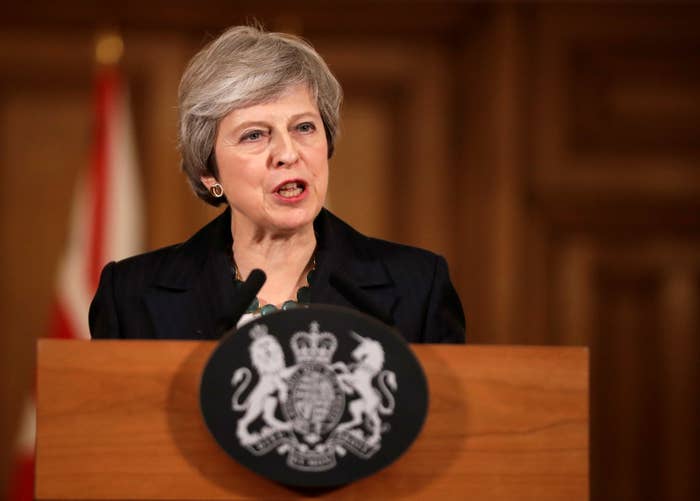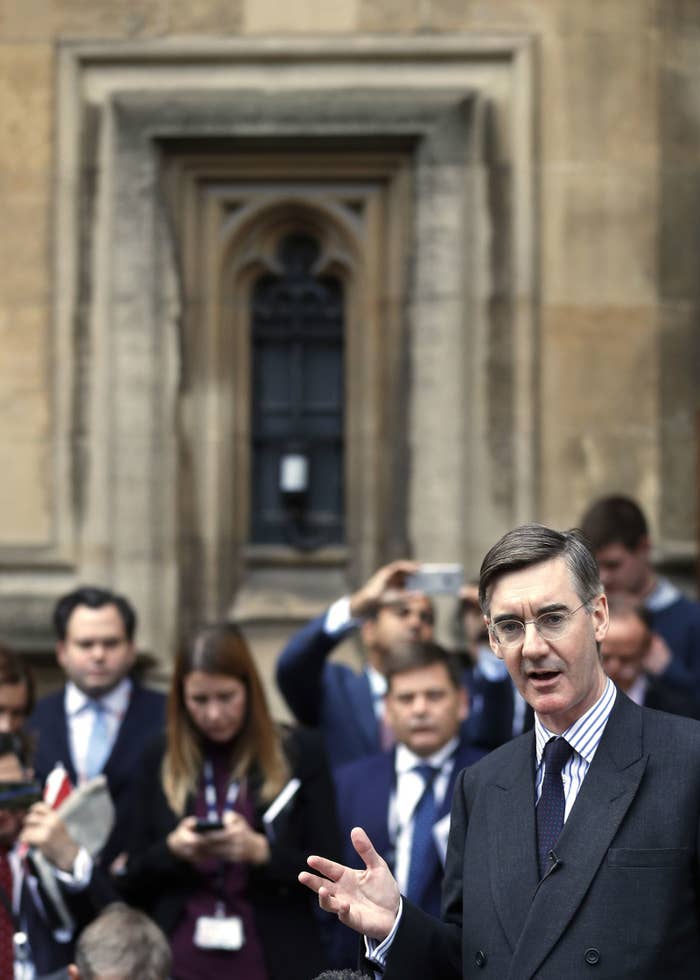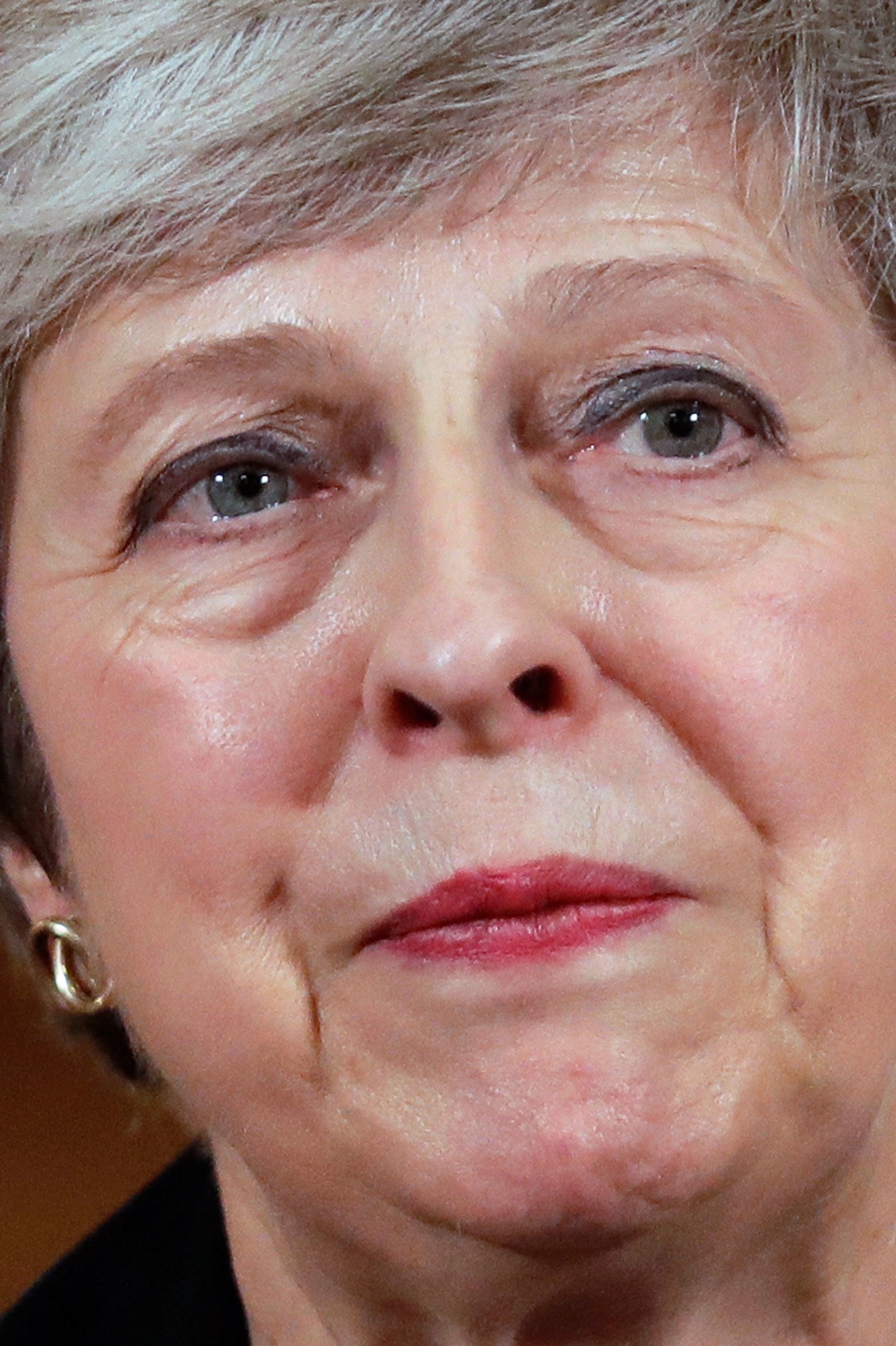
After weeks of speculation about Theresa May’s future, the party has triggered a vote on whether she should remain as the leader.
On Wednesday morning, the chairman of the Tories’ backbench committee, Sir Graham Brady, announced that the number of MPs who had written to him expressing no confidence in the prime minister had reached the threshold required to trigger a challenge — 48.
The vote has been scheduled for 7pm on Wednesday night.
But how does the process work, and what happens once 48 no-confidence letters have been submitted?

This is the mechanism for triggering a no-confidence vote: The dissenting MPs individually write letters to Brady, chair of the 1922 Committee, the body that represents Tory backbenchers, expressing no confidence in the prime minister.
Brady keeps a tally, and if the threshold of 15% of current MPs is reached he’ll call a vote of all Tory MPs — unless the leader decides to resign first.
The possibility of a confidence vote has been hanging over May for months. Last month, the leader of the hardline Tory Brexiteer European Research Group, Jacob Rees-Mogg, theatrically announced that he had submitted his letter to Brady at a packed press conference on the steps outside Parliament. But the ERG didn't get enough letters at the time to trigger a challenge.
In the year and a half since the last general election, there’s been a lot of speculation about how many letters Brady has received. There was a flurry of anxiousness among some Tories at the start of the year that the count had gone into the 40s. But Brady is famously tight-lipped about both the number of letters he’s received and the identities of those who’ve submitted them. Speaking at this year’s Tory party conference in Birmingham he mocked the pundits’ attempts to keep score, saying MPs often told journalists “they had sent in letters which they hadn’t, or that they’ve withdrawn letters they never sent in the first place”.
What happens once 48 letters have been received?
When Brady’s count does reach 48, he has to agree with the leader timetable for a confidence vote “as soon as possible in the circumstances prevailing”. The ballot would be held secretly.
The last time the Tories held such a ballot was in 2003, when Iain Duncan Smith was leader. In that case, the vote was held the day after the chair of the 1922 committee announced he’d received enough letters to trigger a ballot. Duncan lost and was removed as leader. In this case, the timetable has been even quicker.
May will only have to win the confidence vote by a simple majority to remain as leader. At present, that amounts to 158 MPs.
Some Tories think that a narrow win isn’t enough — that a leader without a strong majority wouldn’t have the authority to continue. However, some Downing Street advisers have argued that because of the extraordinary circumstances, May could carry on even if she scraped through by only a few votes.
What happens after the result?
Under party rules, if May wins a confidence vote she can’t be challenged for another year. That explains why she hasn’t faced a confidence vote before now, even though so many of her MPs have been desperately unhappy with her Brexit policy: They calculated that they didn’t have the numbers to win and would then be stuck with her.
If May loses a confidence vote, she’s finished — a leadership contest would be held and the party would elect a new prime minister.

The executive committee of the 1922 Committee, in consultation with the Conservative party board, would set the rules of the contest and the timetable. The last time there was a contest — in 2016, after David Cameron resigned following the Brexit vote — the committee allocated 11 weeks for the process. Cameron said he would stay on as a caretaker until a new leader was in place.
This time, according to Conservatives familiar with the process, a leadership contest would be quicker than that, but it could still take six weeks. In a statement on Wednesday, May said that if she loses the vote a new leader wouldn't have time to complete a Brexit deal and would have to suspend the process.
How would a leadership contest work?
There are three phases to the election.
First, candidates are selected. In the 2016 contest, nominations opened immediately after the election was called on June 29 and closed the following day. If there’s only one candidate, they’ll be automatically appointed. This time, though, with no obvious frontrunner, the field could be wide open.

Next, MPs whittle down the shortlist through a series of ballots. Last time, MPs voted by secret ballot on Tuesdays and Thursdays in a committee room in the House of Commons. In each round, the candidate with the lowest number of votes is withdrawn from the race, until there are two candidates left. (Some candidates drop out after seeing that they don’t have the numbers to win.)
In the final stage, the party members get to choose between the two remaining candidates. In 2016, the contest didn’t get this far: Andrea Leadsom dropped out, making Theresa May the prime minister without a ballot of the party’s grassroots. In 2005, there was a full run-off, with party members asked to choose between David Cameron and David Davis. For more than a month, the two MPs fought to win the support of grassroots Tories around the country, facing each other at 11 regional hustings. Members voted by postal ballots. Cameron won with 68% of the vote.
Only those who have been Tory members for more than three months are entitled to take part in the election. In 2005, around 254,000 Tory members voted.
